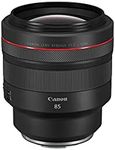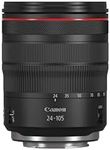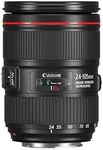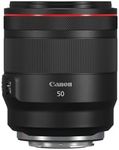Buying Guide for the Best Canon Lenses For Portraits
Choosing the right Canon lens for portrait photography is crucial to capturing stunning images with beautiful background blur and sharp focus on your subject. Portrait lenses are designed to highlight the subject while creating a pleasing separation from the background. When selecting a lens, consider factors such as focal length, aperture, and image stabilization, as these will significantly impact the quality and style of your portraits. Understanding these key specifications will help you make an informed decision that aligns with your photography style and needs.Focal LengthFocal length is the distance between the lens and the image sensor when the subject is in focus, usually measured in millimeters (mm). It determines how much of the scene will be captured and how large the subject will appear. For portrait photography, a focal length between 50mm and 135mm is often preferred as it provides a flattering perspective and allows for good subject isolation. Shorter focal lengths (e.g., 50mm) are great for full-body portraits and environmental shots, while longer focal lengths (e.g., 85mm to 135mm) are ideal for headshots and close-ups, offering more background blur.
ApertureAperture refers to the size of the lens opening that allows light to hit the camera sensor, denoted by f-numbers like f/1.8, f/2.8, etc. A larger aperture (smaller f-number) allows more light to enter, which is beneficial in low-light conditions and creates a shallow depth of field, resulting in a blurred background that makes the subject stand out. For portrait photography, lenses with wide apertures such as f/1.2, f/1.4, or f/1.8 are highly desirable as they provide excellent subject isolation and beautiful bokeh.
Image StabilizationImage stabilization (IS) is a feature that helps reduce blur caused by camera shake, especially useful in low-light situations or when using longer focal lengths. It allows you to shoot at slower shutter speeds without compromising image sharpness. While not always necessary for portrait photography, having image stabilization can be beneficial if you often shoot handheld or in challenging lighting conditions. If you frequently work in controlled environments like studios, this feature might be less critical.
Lens TypeLenses can be categorized into prime and zoom lenses. Prime lenses have a fixed focal length and are known for their superior image quality, wider apertures, and lighter weight, making them a popular choice for portrait photography. Zoom lenses offer versatility with variable focal lengths, allowing you to adjust the framing without changing lenses. If you prefer high-quality images and often shoot in controlled settings, a prime lens might be the best choice. However, if you need flexibility and convenience, a zoom lens could be more suitable.
Autofocus PerformanceAutofocus performance refers to how quickly and accurately a lens can focus on a subject. For portrait photography, having a lens with reliable and fast autofocus is important to ensure sharp images, especially when capturing candid moments or working with moving subjects. Look for lenses with advanced autofocus systems that offer smooth and silent operation, which is particularly beneficial if you also shoot video. Consider your shooting style and whether you often work with fast-moving subjects when evaluating autofocus performance.
















